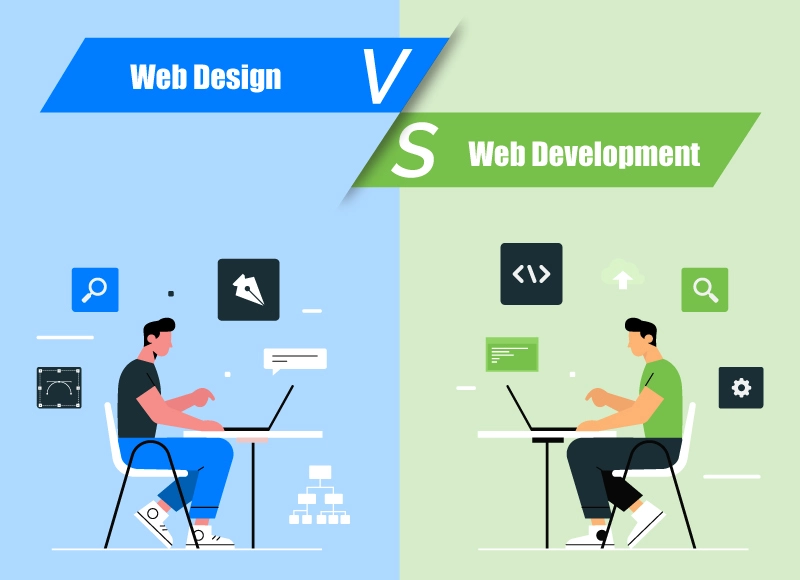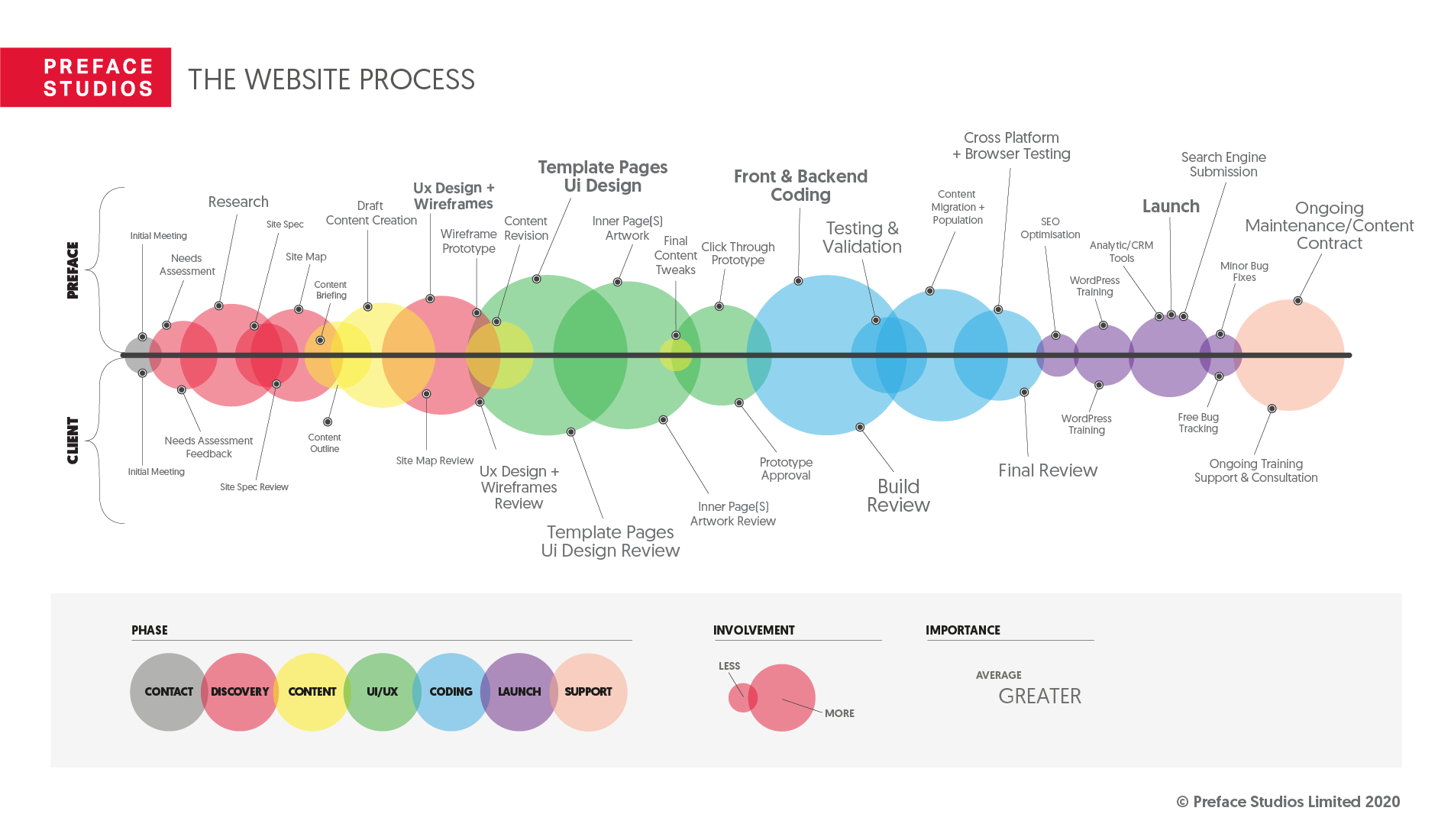How aesthetic choices in web design influences user engagement
Checking Out the Different Kinds of Website Design and Their Unique Benefits
The landscape of website design includes a range of styles, each offering distinctive benefits that provide to various individual requirements. Minimal and level styles stress quality, while receptive and worldly layouts improve flexibility across devices. Illustrative and typography-driven techniques intend to boost involvement and emotional resonance. Recognizing these diverse kinds can considerably influence customer experience and brand name understanding. What lies under the surface of these style choices?
Minimal Web Design

Minimal website design usually incorporates a restricted color scheme and straightforward typography, which not only enhances aesthetics but also reinforces brand identity. The decreased complexity can result in quicker filling times, better enhancing customer contentment. In addition, by minimizing aesthetic mess, customers can involve with web content better, resulting in enhanced comprehension and retention. Generally, minimalist Web design fosters a seamless user experience, making it a popular selection for brand names intending to communicate clearness and professionalism and trust in their on the internet presence.
Receptive Website Design
Receptive website design has ended up being vital in today's digital landscape, making certain mobile compatibility for individuals across various tools. This approach considerably boosts individual experience by giving seamless navigating and access, no matter of screen dimension. As more people access the Web on smart devices and tablet computers, the value of receptive style continues to expand.

Mobile Compatibility Relevance
As mobile phone usage proceeds to rise, making certain sites are suitable with different display dimensions has come to be crucial for reliable interaction and interaction. Mobile compatibility, commonly attained through receptive Web design, permits websites to adapt flawlessly to smart devices, tablet computers, and various other devices. This flexibility not just gets to a more comprehensive audience but additionally enhances brand name reliability. A website that operates well on mobile phones reflects expertise and interest to customer needs. On top of that, search engines focus on mobile-friendly sites in their rankings, making compatibility an essential factor for on-line presence. By buying mobile compatibility, businesses can improve their electronic visibility and cater to the growing variety of users that access info on the move. As a result, prioritizing mobile-responsive style is essential in today's electronic landscape.
Improved Customer Experience

Apartment Layout
Level style is a minimalist technique to Web layout that highlights simpleness and clearness. By getting rid of three-dimensional components such as slopes, darkness, and appearances, level design produces an aesthetically attractive interface that focuses on web content and capability. This design promotes an instinctive navigating experience, as individuals can promptly determine crucial features and activities without distraction.
Among the main advantages of level style is its responsiveness throughout numerous gadgets and screen dimensions. Its straightforward formats and clean lines adjust seamlessly, guaranteeing a consistent experience for individuals on mobile, tablet, or desktop platforms. In addition, level style commonly incorporates vibrant colors and typography, boosting visual effect and brand name acknowledgment.
Furthermore, the simplicity inherent in flat style leads to quicker loading times, which adds positively to customer fulfillment - web design. Overall, flat style continues to be a preferred option for contemporary Web advancement, lining up with contemporary aesthetic choices while supplying exceptional use
Material Style
Material Style represents a style language developed by Google that concentrates on creating a intuitive and cohesive customer experience across digital platforms. This strategy emphasizes making use of grid-based designs, receptive animations, and deepness impacts such as illumination and shadows, which assist to produce a sense of hierarchy and spatial connections. By simulating the physical world, Material Layout allows individuals to communicate with electronic user interfaces in a much more natural and appealing way.
Among the essential advantages of Product Style is its flexibility across various tools and display sizes, guaranteeing a consistent experience for individuals. Additionally, it advertises a clear aesthetic language that enhances functionality, making it less complicated for individuals to navigate intricate applications. The incorporation of vibrant colors and strong typography also plays an important duty in attracting attention to crucial elements, therefore enhancing total user involvement - website design. Consequently, Product Style has come to be a preferred choice among developers looking for to produce useful and aesthetically attractive websites
Typography-Driven Style
Typography-Driven Design concentrates on the strategic use type to boost the visual and functional facets of a website. This style approach prioritizes typefaces, font dimensions, spacing, and hierarchy to develop aesthetic passion and overview individual experience. By meticulously selecting typography, designers can convey brand identification and evoke feelings, making the web content much more easily accessible and appealing.
Efficient typography improves readability and usability, making certain that customers can easily browse the website and take in details. The best mix of type can additionally develop a clear aesthetic power structure, enabling individuals to swiftly determine essential messages and calls to activity.
Moreover, a typography-driven approach can be adjusted to numerous devices, making sure uniformity throughout systems. This versatility is important in today's multi-device landscape, where individual experience is vital. Ultimately, Typography-Driven Layout serves not only as an imaginative choice yet also as a useful element that greatly influences a web site's performance.
Illustrative Website Design
Illustratory website design uses visual narration techniques that can substantially improve individual involvement. By incorporating one-of-a-kind images, web sites can create a memorable brand identity that reverberates with their target market. This method not just mesmerizes visitors but also communicates messages in a visually engaging fashion.
Aesthetic Narration Techniques
A wide range of Web designers employ aesthetic narration methods to produce immersive and interesting customer experiences. This strategy combines imagery, typography, and layout to tell a tale that resonates with users on an emotional degree. By incorporating engaging visuals, designers can efficiently communicate messages and stimulate sensations, guiding visitors via a brand's journey. Infographics, computer animations, and interactive elements offer to boost stories, making complex details a lot more remarkable and accessible. In addition, aesthetic storytelling can establish a natural brand identity, as constant imagery and styles strengthen core values and messages. Eventually, this technique not just astounds individuals however also fosters a deeper link with the web content, urging exploration and retention. With skilled application, visual narration transforms conventional Web experiences into my company meaningful and vibrant interactions.
Enhancing Customer Involvement
Efficient website design considerably improves user involvement by leveraging illustratory components that attract interest and foster interaction. Illustrations can streamline intricate principles, making them more unforgettable and approachable for customers. They damage the monotony of text-heavy web go to this website pages, developing aesthetic breaks that welcome exploration. On top of that, special illustrations can evoke feelings, urging individuals to get in touch with the material on a much deeper level. Interactive components, such as computer animations or hover effects, can additionally enhance interaction by inviting users to participate actively as opposed to passively eating details. This method not just maintains visitors on the site much longer yet likewise increases the possibility of return check outs. Inevitably, reliable illustrative website design changes the individual experience, making it more impactful and enjoyable.
Branding Via Illustration
Aesthetic aspects play a substantial role fit a brand's identification, and images are an effective tool hereof. Illustratory website design allows brands to convey their special character and values via personalized art work. This technique promotes a much deeper psychological connection with the audience, boosting memorability and interaction. By incorporating illustrations, brand names can separate themselves in a congested industry, producing a distinctive aesthetic story that reverberates with their target demographic. In addition, images can make and simplify complex ideas content extra obtainable, successfully communicating messages in an interesting fashion. On the whole, branding through illustration not just improves the customer experience but additionally strengthens brand recognition, making it an important technique for services intending to develop a strong on-line visibility.
Often Asked Questions
Just how Do I Choose the Right Website Design Kind for My Company?
To select the ideal Web layout type for a company, one must analyze objectives, target market, and sector criteria. Reviewing user experience and performance will certainly lead the choice process for suitable engagement and effectiveness.
What Devices Are Finest for Producing Different Website Design Styles?
Popular devices for developing varied Web layout styles consist of Adobe XD, Figma, Lay Out, and WordPress. Each deals special functions tailored to different design needs, enabling developers to build functional and visually enticing sites successfully.
Just How Much Does Expert Website Design Normally Price?
Specialist website design typically costs in between $2,000 and $10,000, depending upon complexity, functions, and designer expertise. Custom-made services and continuous maintenance might enhance costs, while layouts can use more affordable choices for easier tasks.
Can I Integrate Numerous Website Design Types Successfully?
Yes, combining numerous Web design kinds can be effective. By integrating aspects from various designs, designers can produce one-of-a-kind, interesting individual experiences that deal with diverse target markets while enhancing functionality and aesthetic allure.
Exactly How Do Design Fads Influence Customer Experience and Interaction?
Style fads greatly affect customer experience and engagement by improving visual charm, enhancing navigating, and fostering psychological connections - web development. Remaining upgraded with trends permits developers to create user-friendly user interfaces that reverberate with customers and urge extended interactions
Minimalist and flat designs stress quality, while receptive and worldly layouts enhance convenience across tools. It may appear counterproductive, minimalist Web style stresses simpleness to boost individual experience. Responsive Web style plays a necessary function in enhancing individual experience by making certain that an internet site adjusts effortlessly to numerous screen sizes and discover this gadgets. Level layout is a minimal approach to Web design that emphasizes simpleness and clearness. Material Layout represents a style language developed by Google that concentrates on developing a natural and instinctive customer experience across digital systems.